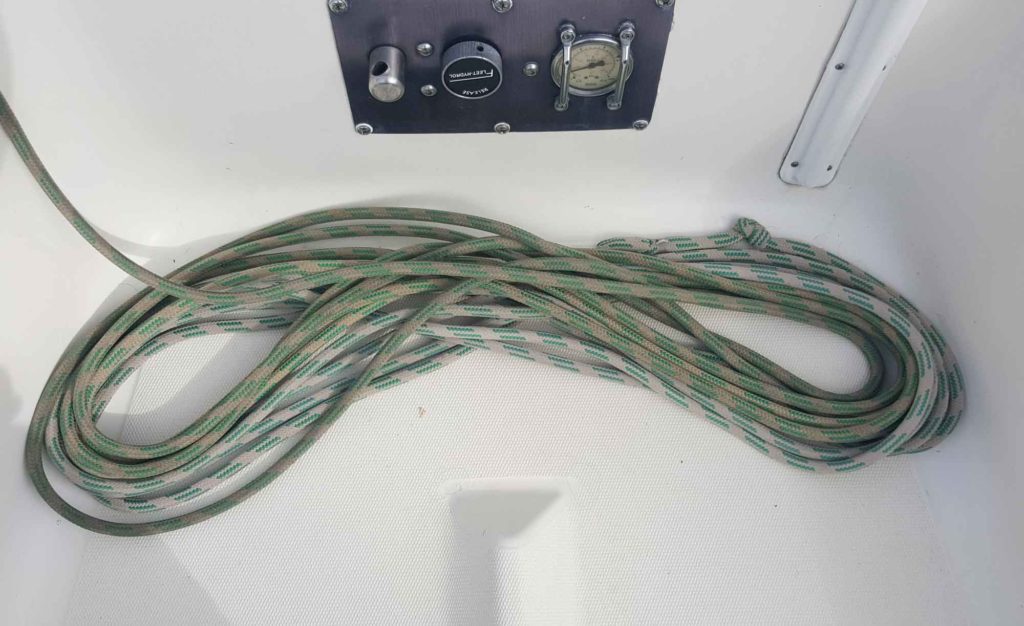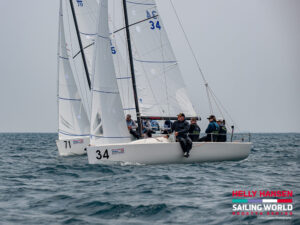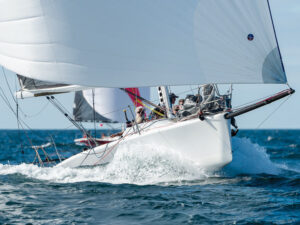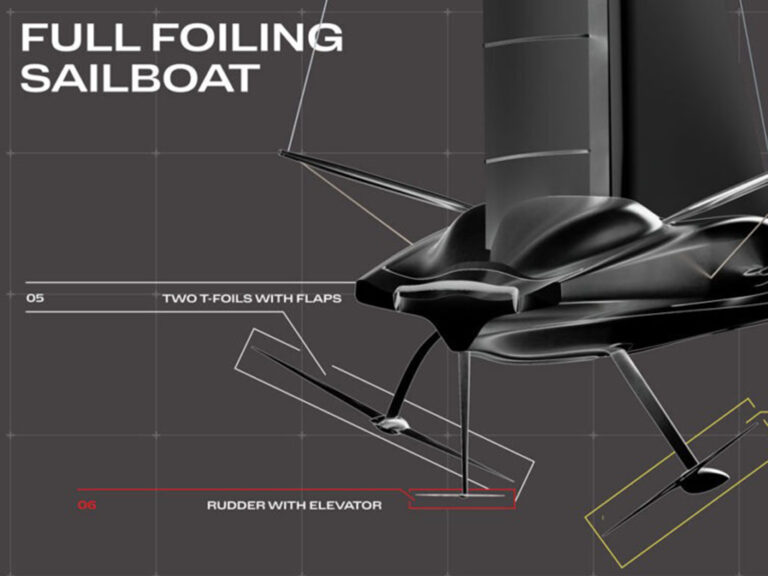
Ropes can be finicky. Sometimes they run flawlessly and sometimes they have a mind of their own. Luckily there are some simple techniques to ensure they work as desired.
When it comes to flaking halyards, the most important thing is that the line going out first is on top of the line going out last. On small boats that keep halyards on deck, such as the Etchells, I find the bitter end and lay a large figure-8 pattern on the deck near the halyard cleat. On midsize boats, I find the bitter end and throw that through the companionway or down into the bottom of a companionway bag. I then continue to “flake” or drop the remaining line on top of it.
On big boats, I often use a winch as a third hand. It holds one end of the coil while my left hand holds the other end. This can be helpful if you have a short “wingspan” or the line gets heavy. Once again starting at the bitter end, my right hand creates a large figure-8 between the winch and my left hand. When finished, I lay the coil down below deck on the floor or in a low-traffic area at the front of the cockpit, ensuring that, when I lay it down, the bitter end is on the bottom.
There are just a couple of rules for coiling lines at the end of the day. When I was younger, I knew when I had done it wrong when my father, a long-time boat captain, threw the sheet at me and told me to do it again.

First, make long, even full-arm span coils. Many high-end ropes will naturally lay in the desirable figure-eight as you coil. On small boats with smaller and often softer lines, the rope may naturally lay in a loop. This is ok. As I am coiling rope, I grab the line in my fists, stretch to full “wingspan” and then bring my fists together without letting the line twist in my grip. However the line naturally lays is how I let it be. Second, at the end, make the cinching nice and tight so the coil stays together. There are numerous ways to finish the coil. On smaller boats I prefer the cinching around the entire coil a little under the top. On larger boats I cinch the line around the top of the coil. Lastly, and many a boat captain’s pet peeve, leave a long enough tail so the coil can be hung.









